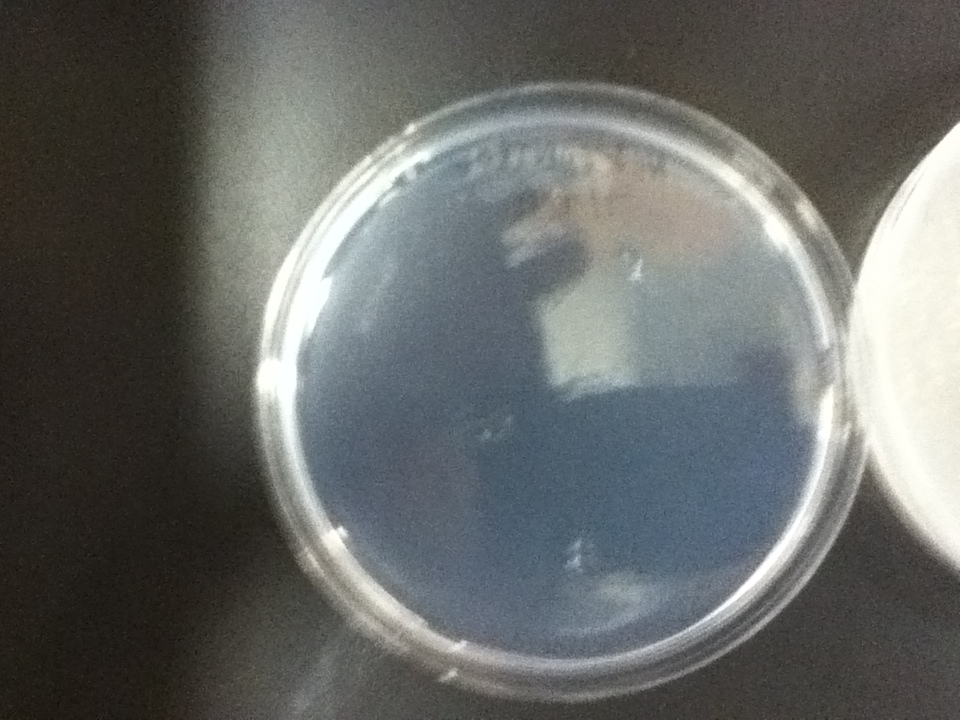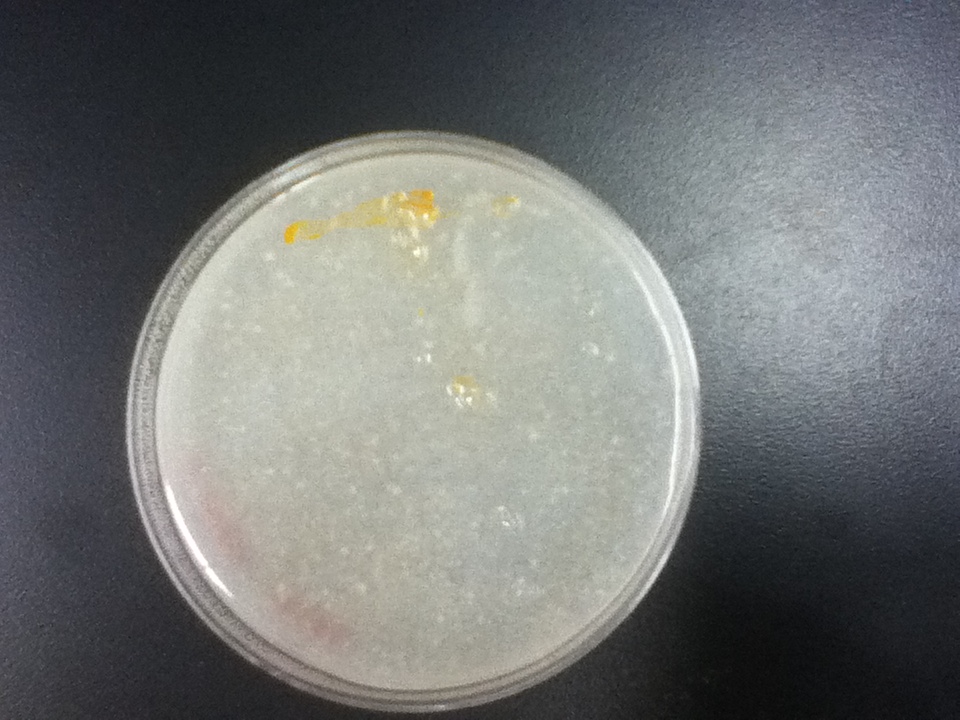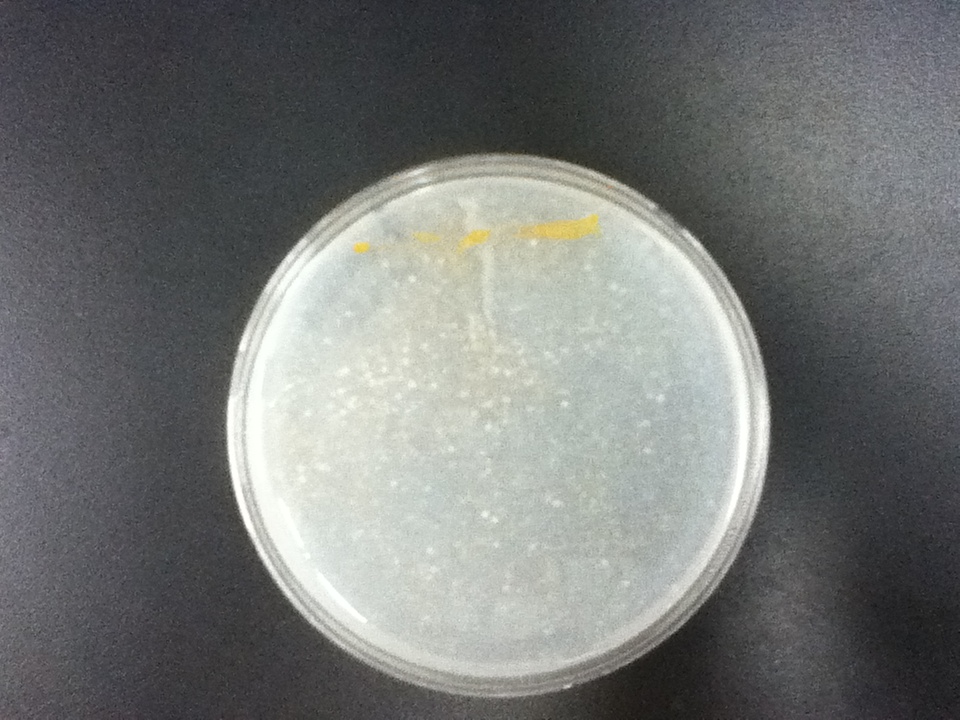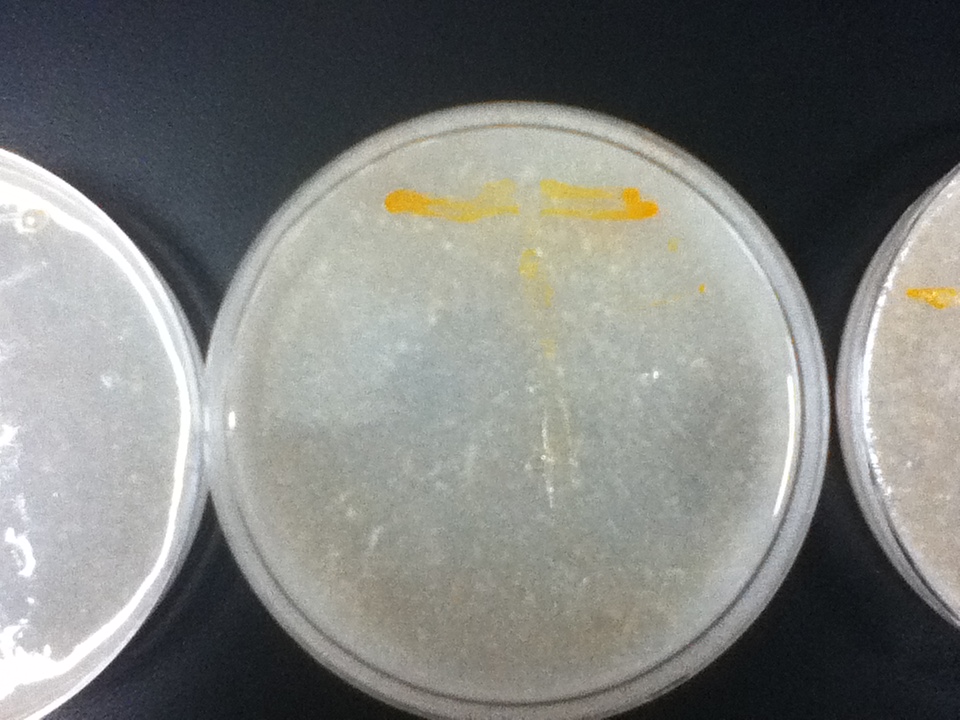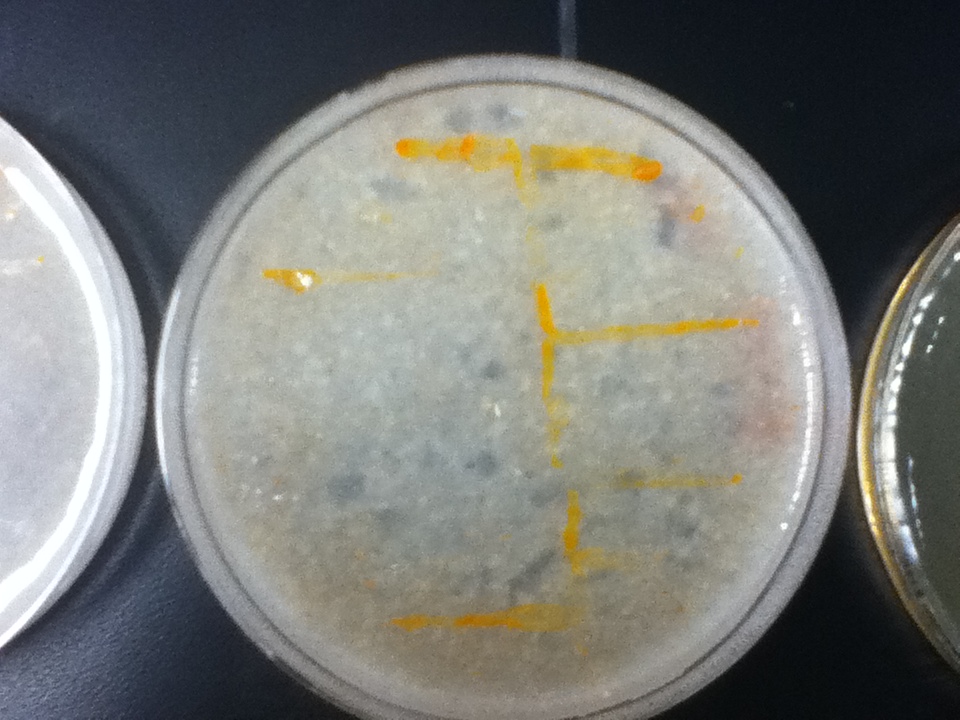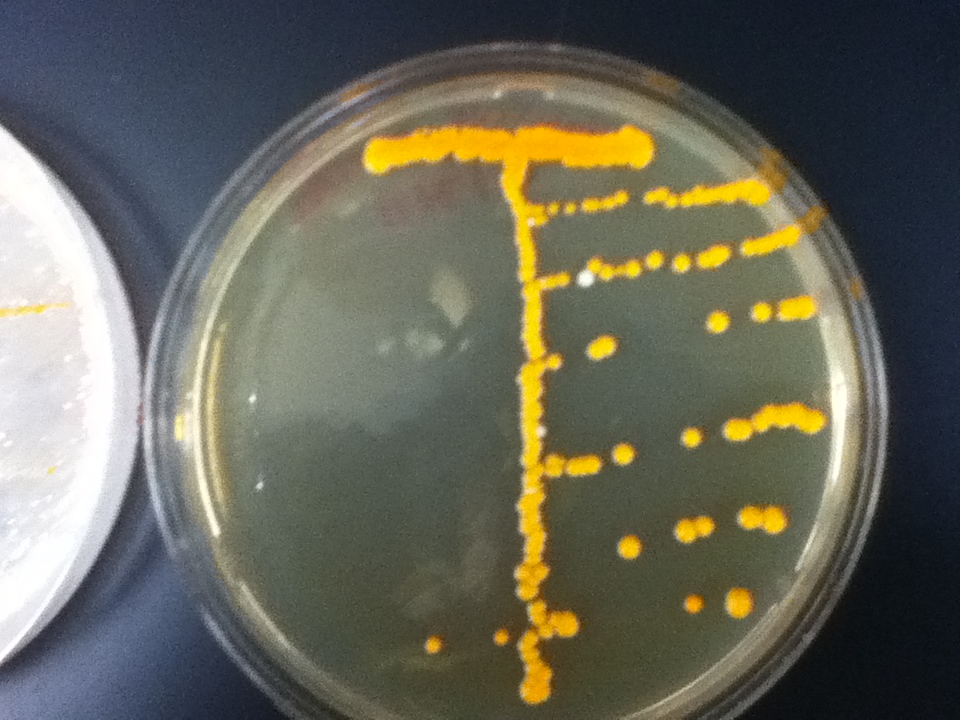Dough Media vs. YPD
In order to compare dough media to YPD in terms of effectiveness in growing our beta-carotene cells, we did a side-by-side comparison of several different concentrations of dough media, a negative control plate with only salt, water, and agar, and a positive control plate of YPD.
After growing up the cells for approximately 12 hours at 33ºC, they were all removed from the incubator and compared. We saw that with increasing concentration of flour in our dough media, there was visibly increased growth in our cells. We noted, however, even with the maximum concentration of flour (for a viable dough plate) that the growth was significantly slower than that of a YPD plate's.
For the following plates, the following base recipe was used:
- 20ml H2O
- 0.24g NaCl
- 0.15g bactoagar
The amount of flour was varied from plate to plate.
Dough Media-Negative Control
- 0.00 g flour
Dough Media 1
- 0.25 g flour
Dough Media 2
- 0.35 g flour
Dough Media 3
- 0.45 g flour
Dough Media 4=
- 0.55 g flour
Dough Media-Positive Control
- YPD
Optimized Recipe
Through these trials, we determined that the optimized recipe per plate is:
- 20ml H2O
- 0.24g NaCl
- 0.15g bactoagar
- 0.55g flour
 "
"


